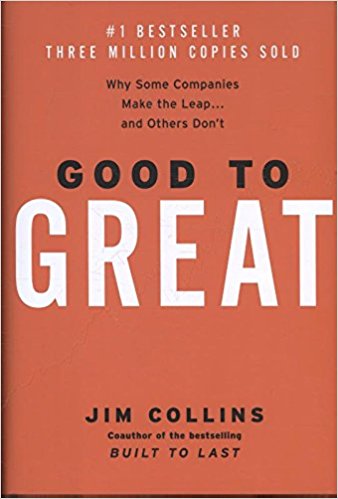Learn what differentiates Great Companies from Good Companies
Jim Collins and his team researched over 6000 press articles and 2000 pages of executive interviews to find out what makes companies go from good to great. Good-to-great companies are those which have been performing below the average stock market performance for at least 15 years before making the transition to “greatness.”
A “Hedgehog concept” provides a clear path for a company to succeed
The hedgehog principle comes from the fact that a hedgehog has always a simple way to defend itself. Imagine a cunning fox tries to hunt the hedgehog with a variety of clever tactics, the hedgehog has always the same, easy and fast response to the attacks: curling itself up into a spiky ball.
Good-to-great companies apply the same principle by asking themselves three key questions:
- What can we be the best in the world at?
- What can we be passionate about?
- What is the key economic indicator we should concentrate on?
Good-to-great companies eventually succeeded after an average of four years of iteration and debate in the intersection of these questions. After they discovered their hedgehog principle they had a clear path to follow and every decision in the company was made in line with it, as a consequence, success followed.
Tiny incremental pushes in the right direction
The following example perfectly shows how long-term adherence to the Hedgehog concept builds up momentum and results in success.
The steel manufacturer Nucor battled bankruptcy in 1965. Nucor then figured that they could make steel better and cheaper by using mini-mills, a cheaper and more flexible form of steel production. They incrementally built mini-mills and gained more customers until after two decades they became the most profitable steel company in the US. That was exactly what the CEO Ken Iverson realized in 1975 if they just kept pushing in the same direction.
Other companies did not strive consistently to build up momentum in one direction. Instead, they tried to execute dramatic changes and hasty acquisitions which only resulted in lackluster results.
Good-to-great requires great leadership
Egocentric CEOs don’t get a company far, their priority is themselves. Stanley Gault, the legendarily tyrannical and successful CEO of Rubbermaid for example left behind a shallow management which resulted in Rubbermaid ending up being acquired by a competitor in just five years.
Great leaders care about their companies even after they leave. They remain humble but are fanatically driven towards results. They are the so-called level 5 leaders. Leaders who downplay their own rule but contribute immensely to the long-term success of a company.
Focus on the right people
Good-to-great companies try to acquire only the best, quality people. Even if they don’t have specific jobs in mind for them. They know that those people eventually will figure out a way to make the company profitable.
When good-to-great companies see that they had the wrong person, they act immediately to either get rid of them or cycle them to a more suitable position.
Confront the facts while never losing faith
Good-to-great companies work by the Stockdale paradox, named after a US admiral who never lost faith that he would get home after he was captured and tortured during the Vietnam War. He maintained faith that he’d get home but without indulging in foolish optimism either. He credited his survival to his ability to confront facts while still retaining faith, in a similar manner great companies retain an unwavering faith that they will prevail.
He credited his survival to his ability to confront facts while still retaining faith, in a similar manner great companies retain an unwavering faith that they will prevail. They deal with the facts instead of burying their heads in the sand, all while keeping their spirits up.
When Procter & Gamble invaded the paper-based goods market, the market-leader Scott Paper tried to diversify in order to gain categories where P&G wasn’t competing. Kimberly-Clark, in contrast, relished the opportunity to compete against P&G. Two decades later Kimberly-Clark owned Scott Paper and dominated P&G in six out of eight product categories.
Deal with problems but don’t blame
Great companies know how to air the truth and then deal with it without blame because blame would discourage people to speak up about problems.
Red flag mechanisms which automatically signal critical alerts help managers to pay attention to harsh facts. Great companies have the same problems than other companies but they deal with them more effectively and honestly.
Short Summary: Great companies manage to create a effective company culture through visionary leaders who have a clear sense of direction.

